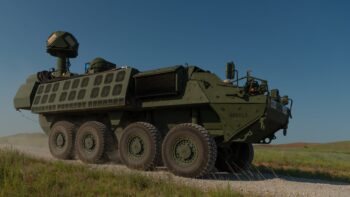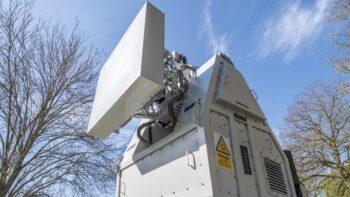 Millennium Space Systems has built a reputation for delivering high-performance small satellite prototypes and constellations quickly and for the best value. Boeing recently announced a new high-throughput small sat factory, powered by Millennium, designed to scale manufacturing for very large small-sat constellations. We sat down with Millennium’s Chief Executive Officer Jason Kim to talk about the new factory and where small sat manufacturing is going next.
Millennium Space Systems has built a reputation for delivering high-performance small satellite prototypes and constellations quickly and for the best value. Boeing recently announced a new high-throughput small sat factory, powered by Millennium, designed to scale manufacturing for very large small-sat constellations. We sat down with Millennium’s Chief Executive Officer Jason Kim to talk about the new factory and where small sat manufacturing is going next.

Jason Kim
Tell us about this new Small Sat Factory that Boeing and Millennium unveiled.
The Small Sat Factory is housed within Boeing’s 1-million square foot satellite manufacturing factory in El Segundo, California. We designed a 30,000 sq ft high-throughput small sat production, integration and test facility to be modular and responsive to meet the proliferated small sat constellation needs of our customers. It really enhances our ability to seamlessly transition from small constellations to very large constellations for both government and commercial programs.
Why is Boeing investing in small sats?
We are seeing demand from our government and commercial customers for smaller, quicker-to-market solutions that will enable our customers to meet the demands of their evolving missions and markets.
Why do customers want small sats?
From our perspective, there are a variety of reasons – affordability, tech refresh, flexibility, etc. I’ll say that not all small sats are created equal. We focus on high-performance small sats. We’re able to pack a lot of capability into our small sats because we’re constantly advancing technology. That’s essential when it comes to our national security space customers.
How is the small sat market changing and how does that impact your manufacturing plans?
There has been a clear trend toward proliferated constellations of small satellites. Both government and commercial customers are looking for additional resiliency through diversity of orbits, satellite size and mission life. And these are areas that both Boeing and Millennium excel in. We have systems across orbits and missions.
In terms of manufacturing, what does each side bring to the table?
This is really a partnership that enables a full suite of multi-orbit and multi-mission satellites to customers. Millennium adds the small satellite component to the Boeing portfolio. We’re learning from Boeing’s experience in high-rate production, advanced manufacturing techniques and additive manufacturing, as well as digital engineering and model-based engineering. At the same time, Boeing is learning from us in the way we approach rapid prototyping.
What kind of satellites will you be building at this facility, and how quickly will you start building large satellite constellations?
We can build small sats of various sizes, including half-ESPA and ESPA-grande-size vehicles. We will achieve full operational capability by Q4, and throughput will increase over time as we bring in new programs. We are deliberately taking a phased approach to ensure a seamless transition from small constellations to very large constellations.
How many small sats will you be able to build a year in the factory?
Boeing is constantly evaluating new capabilities and opportunities, so I won’t limit us by locking us into a number. What I can share with you is that our factory is scalable to very large constellations of high-performance small satellites. We’ll be able to meet the needs for both high-stakes national security missions and commercial customers.
Which orbits can small sats fly in?
Small sats can fly in any orbit – LEO, MEO, GEO and I’d say even cis-Lunar. We’ve designed our space vehicles to be flexible to accommodate various space environments.
Is the factory a direct response to competitors’ small sat factories?
We started developing small satellites long before they became popular. The demand since then has only increased, and we’re able to deliver high-performance satellites that have the sensitivity and capability our customers need.
Will the factory be used for the Space Development Agency’s Tracking Layer?
I can’t comment for the Space Development Agency. What I can say is that this factory is designed to accommodate large constellations like the SDA Tracking Layer.
Will you still operate in the original headquarters?
Yes, we will continue to design and deliver prototypes and small constellations in our headquarters. The Small Sat Factory is dedicated to very large constellations.





















